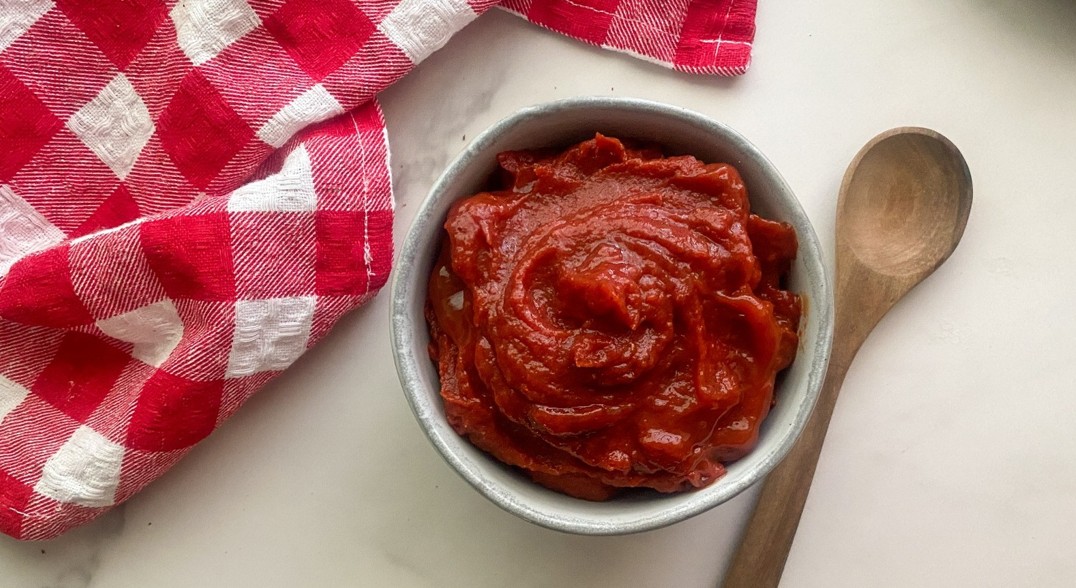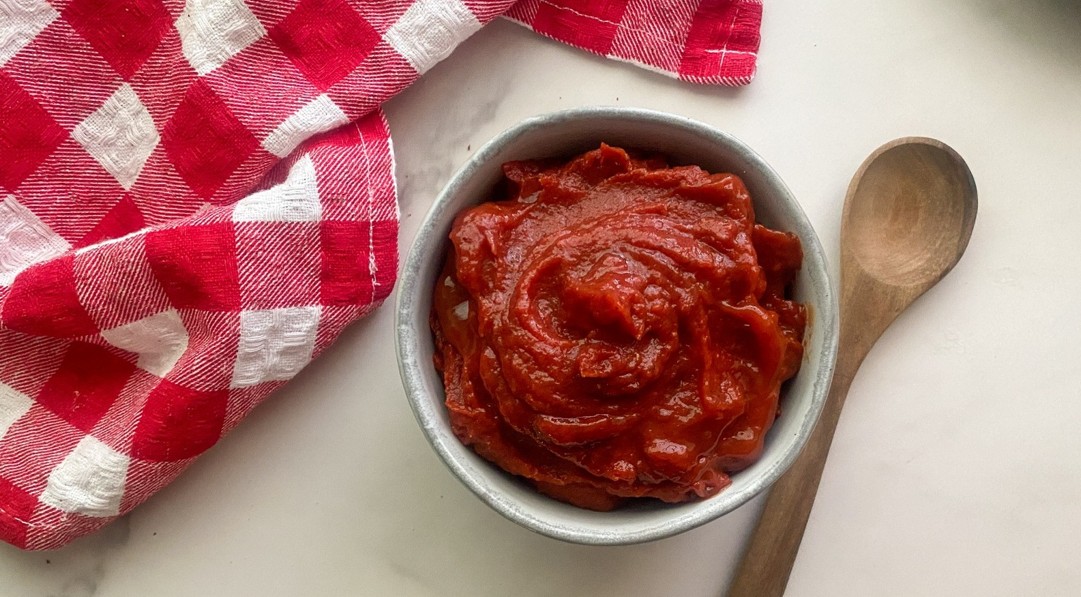
For many, ketchup is a staple, a condiment so ingrained in our culinary landscape that we rarely give it a second thought beyond grabbing a bottle from the supermarket shelf. But what if we told you that the vibrant, tangy, slightly sweet sauce you love could be even better, made right in your own kitchen, free from high-fructose corn syrup, artificial flavors, and excessive sodium?
Making homemade ketchup is a surprisingly simple and rewarding endeavor. It allows you to control the quality of your ingredients, tailor the sweetness and spice to your liking, and enjoy a fresh, robust flavor that store-bought versions simply can’t match. Prepare to elevate your fries, burgers, and hot dogs to a whole new level!
Why Bother Making Your Own Ketchup?
- Superior Flavor: Homemade ketchup boasts a deeper, more authentic tomato flavor, enhanced by fresh aromatics and carefully selected spices.
- Ingredient Control: Say goodbye to high-fructose corn syrup, artificial colors, and preservatives. You choose the sweeteners, the quality of your tomatoes, and exactly what goes into your sauce.
- Customization: Want it spicier? Sweeter? More vinegary? A hint of smoky paprika? You’re the chef!
- Healthier Option: With control over sugar and salt content, you can create a healthier version tailored to your dietary needs.
- Satisfaction: There’s immense satisfaction in serving something delicious you’ve made from scratch.
What You’ll Need: The Essential Ingredients
The beauty of homemade ketchup lies in its simplicity. Here’s what you’ll typically need:
- Tomatoes: Canned crushed tomatoes or diced tomatoes are often preferred for convenience and consistent results. You can also use tomato paste for extra richness and thickness, or even fresh, ripe tomatoes if they’re in season and you have plenty.
- Vinegar: Apple cider vinegar is classic for its mellow tang. White vinegar works too if you prefer a sharper taste.
- Sweetener: Granulated sugar, brown sugar, maple syrup, honey, or even a few pitted dates can be used. Adjust to your sweetness preference.
- Aromatics: Onion (yellow or white) and garlic are fundamental for building a flavorful base.
- Spices: This is where you can get creative!
- Classic Ketchup Profile: Mustard powder, allspice, ground cloves, cinnamon, black pepper.
- Optional Extras: Paprika (smoked or sweet), cayenne pepper (for heat), ginger, celery seed, bay leaf.
- Salt: Essential for balancing flavors.
Equipment
- Large Heavy-Bottomed Pot or Dutch Oven: For simmering.
- Blender: An immersion blender is super convenient for blending right in the pot. A regular countertop blender works too.
- Fine-Mesh Sieve (Optional but Recommended): For achieving that super smooth, store-bought consistency.
- Sterilized Jars or Bottles: For storage.
Step-by-Step Guide to Homemade Ketchup
Let’s get cooking! This recipe yields about 2 cups of rich, flavorful ketchup.
Ingredients:
- 1 tbsp olive oil
- 1 small onion, finely chopped
- 2 cloves garlic, minced
- 1 (28-ounce) can crushed tomatoes (or diced tomatoes, then blend longer)
- 1/4 cup apple cider vinegar (adjust to taste)
- 1/4 cup granulated sugar (or brown sugar, adjust to taste)
- 1 tsp salt (or to taste)
- 1/2 tsp mustard powder
- 1/4 tsp ground allspice
- 1/8 tsp ground cloves
- Pinch of ground cinnamon
- Pinch of black pepper
- Optional: Pinch of cayenne pepper for a little kick
Instructions:
- Sauté Aromatics: Heat the olive oil in a large, heavy-bottomed pot or Dutch oven over medium heat. Add the chopped onion and cook, stirring occasionally, until softened and translucent, about 5-7 minutes. Add the minced garlic and cook for another minute until fragrant.
- Add Tomatoes & Spices: Stir in the crushed tomatoes, apple cider vinegar, sugar, salt, mustard powder, allspice, cloves, cinnamon, black pepper, and cayenne (if using). Stir well to combine.
- Simmer & Reduce: Bring the mixture to a gentle simmer. Reduce the heat to low and cook, uncovered, for 45-60 minutes, stirring occasionally. The goal is to allow the flavors to meld and the sauce to thicken significantly. It should reduce by about one-third to one-half. The longer it simmers, the richer and more concentrated the flavor will be.
- Blend: Remove the pot from the heat.
- Using an Immersion Blender: Carefully blend the mixture directly in the pot until completely smooth.
- Using a Regular Blender: Transfer the hot mixture in batches to a regular blender (be careful, as hot liquids expand). Blend until completely smooth.
- Strain (Optional for Ultra-Smooth Ketchup): For the silkiest texture, press the blended ketchup through a fine-mesh sieve using the back of a spoon or a rubber spatula. This removes any seeds or bits of onion/garlic skin. Discard the solids.
- Taste & Adjust: Return the strained ketchup (if you strained it) to the pot. Taste and adjust seasonings as desired. You might want more salt, sugar, vinegar, or a specific spice. Simmer for another 5-10 minutes if you made adjustments, allowing flavors to combine.
- Cool & Store: Let the homemade ketchup cool completely before transferring it to clean, airtight jars or bottles.
Tips for Success & Variations
- Don’t Rush the Simmer: This is crucial for flavor development and achieving the right consistency. Low and slow is the way to go.
- Adjust Sweetness & Tang: Taste is personal! Add sugar or vinegar in small increments until you hit your perfect balance.
- Spice It Up: Experiment with different spices. Smoked paprika adds depth, a touch of ginger can be delightful, or go bolder with a pinch of chipotle powder.
- Tomato Paste Boost: For an even richer, thicker ketchup, add 1-2 tablespoons of tomato paste along with the crushed tomatoes.
- Fresh Tomatoes: If using fresh, ripe tomatoes, blanch, peel, and seed them first. You’ll likely need more fresh tomatoes to yield the same amount of ketchup (e.g., 3-4 lbs for a 28oz can equivalent), and the simmering time might be longer to reduce the liquid.
- Consistency: If your ketchup is too thin after simmering and blending, continue to gently simmer it, stirring frequently, until it thickens to your liking. If it’s too thick, you can thin it with a tablespoon or two of water or vegetable broth.
Storage
Homemade ketchup should be stored in an airtight container in the refrigerator. It will typically last for 2-3 weeks. For longer storage, you can freeze it in freezer-safe containers for up to 3 months.
Once you try homemade ketchup, you might find it hard to go back to the store-bought variety. The vibrant flavor, the customizable profile, and the sheer satisfaction of creating something so delicious from scratch make it a truly worthwhile endeavor. So, next time you’re reaching for that red bottle, consider ditching it and whipping up your own batch of irresistible, homemade goodness!







